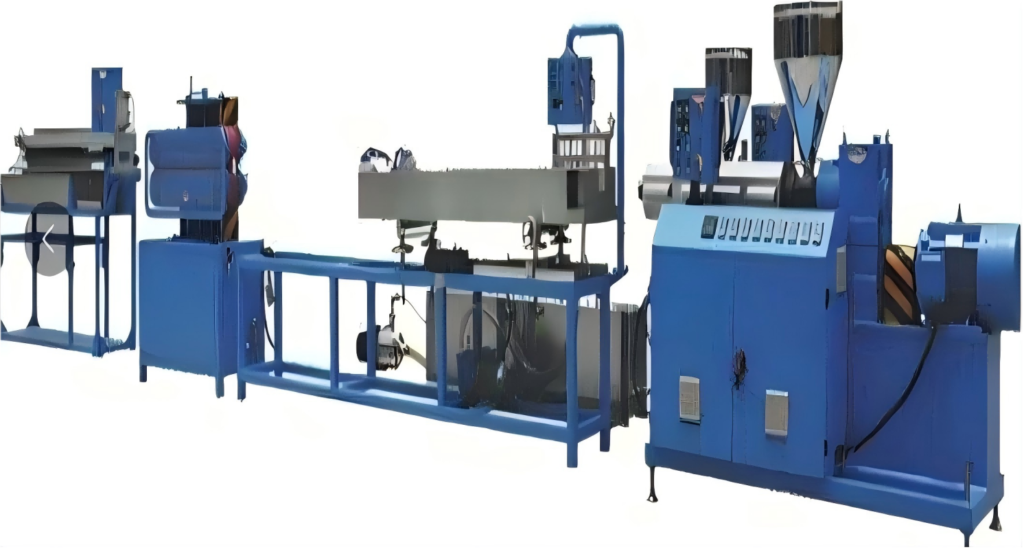Exploring the extrusion approach of TPE securing strips is necessary. The rubber strip plays an important function in doors, windows, and drape walls. A high-quality rubber strip ought to have superior sturdiness versus sunlight UV aging, ozone aging, heat, and oxygen aging, together with resistance to extreme temperatures and water-proof homes. In addition, the rubber needs to exhibit convenience of extrusion, marginal shrinkage, and excellent flexibility throughout processing. This tiny rubber lugs significant energy.
Thermoplastic elastomer (TPE Material) has both the physical and mechanical homes of rubber and the handling characteristics of plastic. In recent years, it has gradually come to be an optimal product to replace rubber and plastic.
TPE sealing strips are extra superb than conventional cross-linked vulcanized rubber in regards to high elasticity, maturing resistance, oil resistance and other properties. At the same time,TPE seals has the features of vast processing methods and can be reused for second usage. It is very praised by constructing organizations in several countries (BPF in the UK, RAL in Germany and CSTB in France).
The enchanting charm of TPE materials

What is TPE?TPE, the complete name is Thermoplastic Elastomer, which is polycarbonate elastomer. It is a brand-new type of product that integrates the high flexibility of rubber and the processability of plastic. Compared to standard rubber and plastic, TPE has numerous distinct advantages.
Initially, TPE has superb flexibility. It can extend and warp over a wide range, and then promptly go back to its original shape, like a magical “springtime”. This high flexibility makes TPE play a crucial duty in various celebrations that call for cushioning, shock absorption and sealing. For instance, in the soles of sporting activities footwear, the securing strips of cars and trucks, the protective covers of electronic products and various other fields, TPE can supply us with exceptional elasticity and comfort.
Secondly, TPE has great processability. It can be processed like plastic via shot molding, extrusion, impact molding and various other processes to produce items of various sizes and shapes. This processability makes TPE highly effecient and inexpensive, and can satisfy the requirements of large-scale production. At the same time, TPE can also be composited with other products to produce more brand-new materials with excellent efficiency.
On top of that, TPE is additionally environmentally freindly, safe and odorless. It does not include harmful chemicals, is harmless to the body and the setting, and satisfies the requirements of modern-day culture for environmentally friendly products. In the fields of food packaging, clinical tools, children’s playthings, etc, TPE has actually become one of the recommended materials.
Benefits of long lasting polycarbonate elastomer seals.
- 1. Great elasticity, difficult to tear, good sealing result;
- 2.The product is green and safe, without heavy metals, plasticizers, and various other damaging chemicals.
- 3. High manufacturing effectiveness, manufacturing rate is a number of times faster than rubber;
- 4.This product excellent resilience in various weather, and preserves its form and adaptability across a wide temperature array, neither bending in warmth neither coming to be fragile in cold.
- 5. Resilient and long-lasting, this product stand up to UV damages, and stays crack-free with time.
- 6. Sturdy, lengthy service life, and can be reused.
The co-extrusion procedure of TPE securing strips is as complies with:

The raw materials are specifically fed right into the two-way feeding device of the soft and difficult co-extrusion equipment, plasticized by a solitary screw extruder, and squeezed out via a mouth pass away.
It can be directly extruded on the surface of the hard rubber strip by the securing strip mold and mildew, which is called front co-extrusion; it can additionally be extruded on the surface of the tough rubber strip or the notch of the rubber strip with a special mold and mildew after the tough rubber strip is created, which is called rear co-extrusion.
Once the co-extruder extrudes the incorporated sealing strip made from soft and tough products, it is then formed and cooled down in the water storage tank via vacuum adsorption with the help of the traction device.
The tough rubber strip part of the TPE soft and difficult co-extruded sealing strip can reach a hardness of greater than 80A, an irreversible contortion of 70% at 70 ℃ and 24h, and a thaw index (190 ℃, 5kg) of 20g/10min, while the solidity of the soft rubber strip part is about 65A, a permanent deformation of 40% at 70 ℃ and 24h, and a melt index (190 ℃, 10kg) of 30g/10min.
SEBS products appropriate for both soft and hard materials, and extra materials like paraffin oil and polypropylene can be consisted of in the option of resources.
Summary
The raw material of the polycarbonate elastomer sealing strip is thermoplastic elastomer, which is named according to its handling approach and mechanical homes. TPE is different according to its structure and manufacturing procedure. Thermoplastic elastomer securing strips are thermoplastic, very easy to procedger, recyclable and reproducible, and eco-friendly; they additonally have the functions and residential or commercial properties of thermosetting rubber (soft, adaptable, and comfortable to touch). If you have a budget plan, you can get TPE securing strips, which are durable and easy to use.


